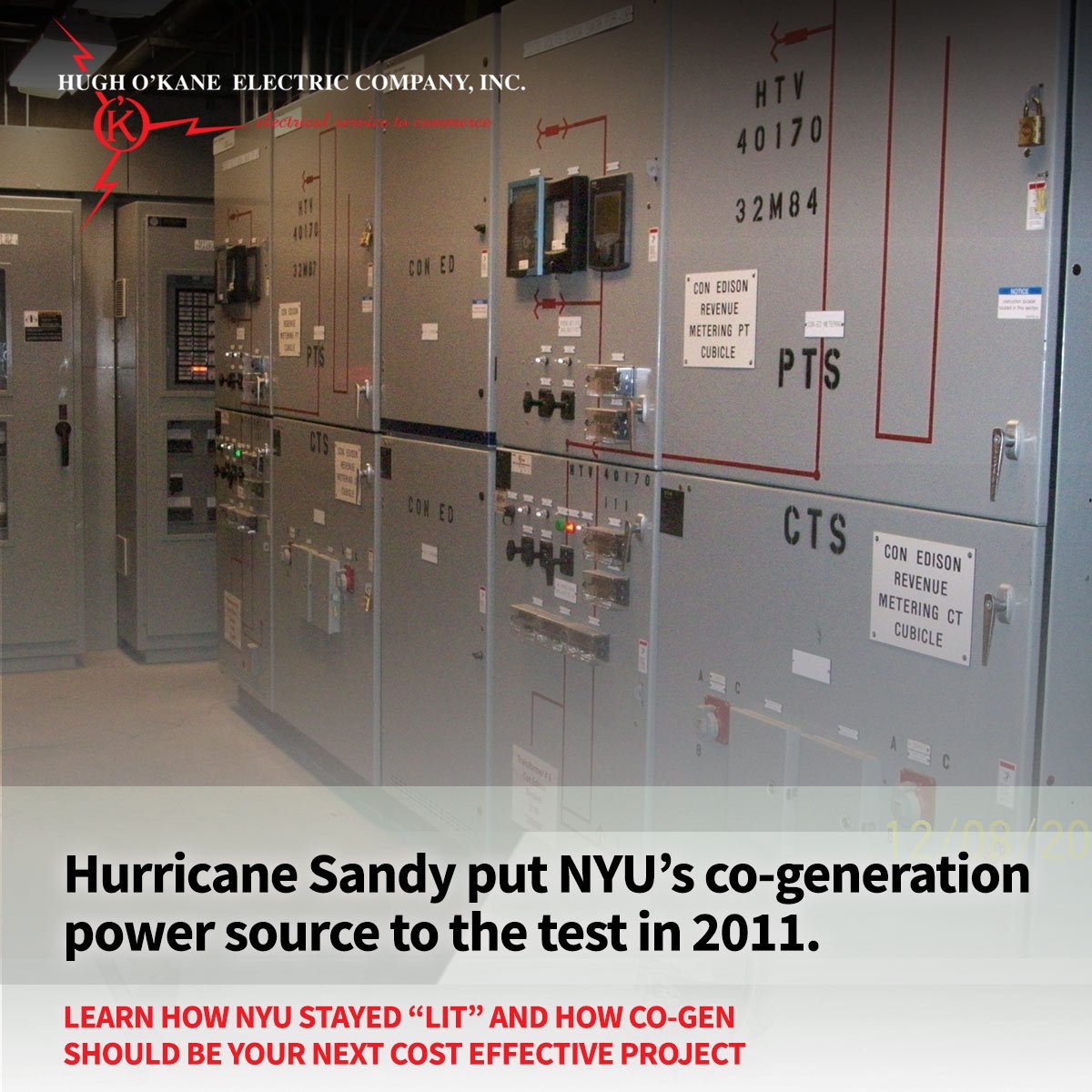Nestled in the heart of Greenwich Village, New York University (NYU) graduates thousands of students every year with Visual and Performing Arts; Social Sciences; Business, and many more degrees. But in the fall of 2012, NYU taught all of Manhattan and its surrounding boroughs a lesson in engineering and why it’s important to plan ahead.
Years prior, NYU started upgrading its outdated Co-Generation (co-gen) plant system. It was not only time for its aging oil-fired-based power network—nearing the end of its life—to be replaced, but it needed to be upgraded to ensure more of the campus was covered, sufficient backup was in place and available for emergencies, and had a more robust power source in place that would comply with future standards and requirements.
At the time, no one was thinking about hurricanes or other natural disasters that if experienced, could sever power and incapacitate the campus and surrounding neighborhoods. This upgrade also aligned with New York City’s PlaNYC Climate Challenge, drafted by Mayor Michael Bloomberg in 2007, which instructed universities and colleges to reduce greenhouse gas emissions by 30% by 2017.
Electrical installer Hugh O’Kane Electric (HOK), lead by President Hugh R O’Kane, built and connected numerous buildings around the NYU campus to a co-gen power network. This allowed the buildings to be independent from the ConEd grid for heat, cooling, and power.
NYU’s upgraded co-gen project was completed in January 2011. Even though the system remains linked to the Con Edison (ConEd) grid, allowing for power flow back and forth as the campus’ loads change, it is also capable of powering the campus on its own.
The university’s system, however, passed its most significant exam in 2012. When Super Storm Sandy hit the northeast that fall, it crippled New York’s power grid, arresting the island and its neighboring boroughs with blackouts for days. NYU campus buildings, however, were some of the only “lit” structures in lower Manhattan thanks to its co-gen power network when ConEd’s grid went dark. According to Bloomberg, Hurricane Sandy caused the biggest storm-related blackout in ConEd’s history and is a strong indictment for why more network upgrades need to materialize in major urban centers.
Cost Saving Benefits
NYU announced when the plant was complete that it was projected to save the university around $5 million to $8 million a year in energy-related costs.
Today, nearly 40 buildings are powered from the system, also providing some with heating and others with chilled water for cooling. It not only ensures continual power in case conventional electrical grids fail, but as one of the largest private co-gen plants in the city, it also affords:
23% decrease in greenhouse gas emissions
68% reduction of EPA Criteria Air Pollutants (e.g. NOx, SOx, PM-10)
Produces twice the electrical power of the old facility – at 13.4 megawatts – and avoids the combustion of 500,000 gallons of fuel oil annually
Resilient. Self-reliant. Cost-effective. The list goes on and on, but cogeneration is indeed a more efficient use of energy, because heat from electricity generation that would have been wasted is put to productive use. This is why it is important that large-scale facilities need to have the right partner when installing a cogeneration network. For more than 15 years, electrical installers like Hugh O’Kane Electric (HOK), lead by President Hugh R O’Kane; has become a leading specializer in alternative power projects for New York City and its metro area. The company has been upgrading, expanding and installing power sources for a variety of public and private enterprises on a regular basis for over 75 years.
This institutional expertise Hugh O’Kane is able to provide to private and public entities is paramount in order to design and implement network projects that can successfully expand their service offerings to increase their market share and gain more customers. This lineage and industry expertise has afforded Hugh O’Kane a competitive edge because it has expert knowledge of an area’s infrastructure and is able to work within the required parameters of existing networks much more easily. In doing so, Hugh O’Kane is able to take the time required to provide an alternative power infrastructure needed to ensure continuous, robust energy for municipalities, corporations and private enterprises



